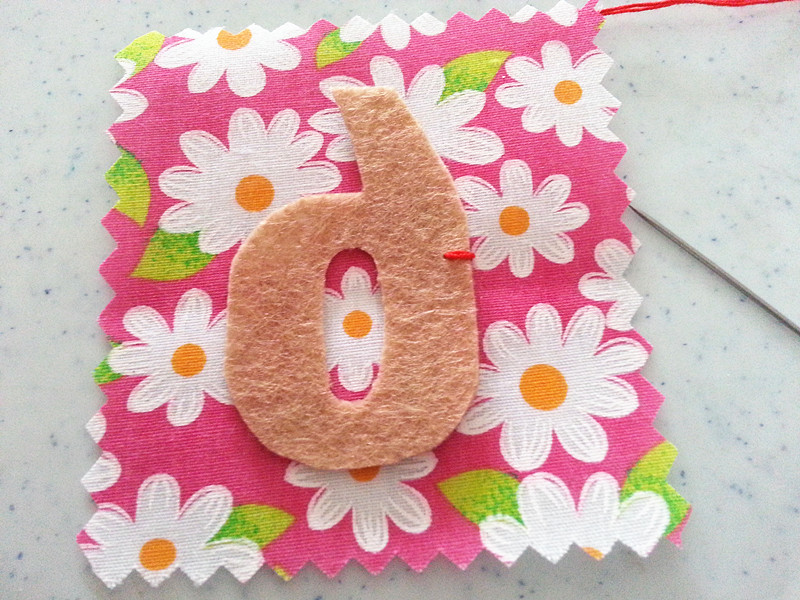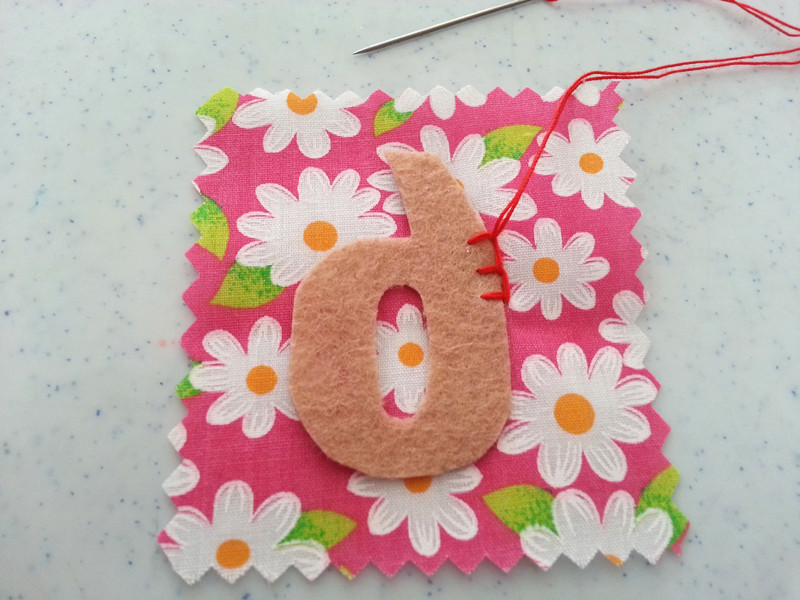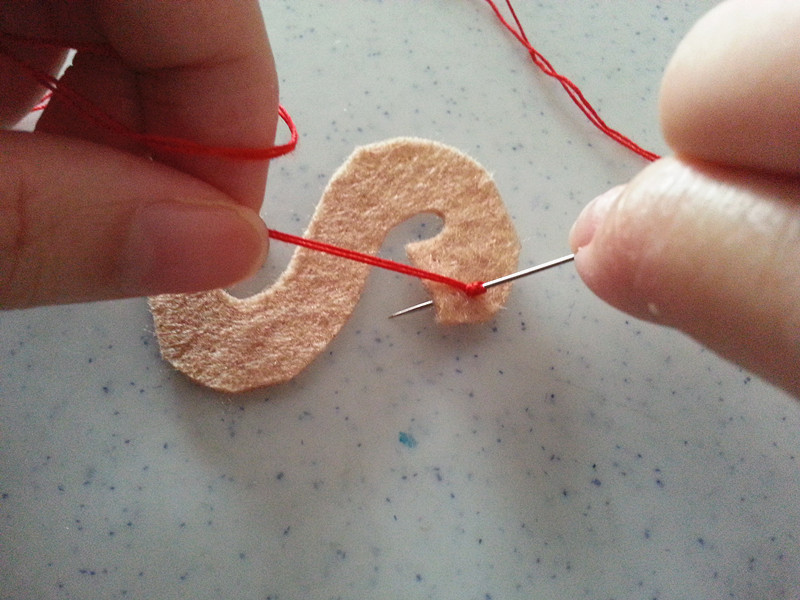Basic Hand-Embroidery Stitches:
Blanket patches stitch
What is blanket stitch patches? Blanket stitch patches is blanket
stitch work together with patch stitch. Anywhere this just creates by me, try
being some fun with non-woven. This embroidery are no major, just have a look
if you suddenly need it for process your felt.
How to do the blanket patches stitch? Let’s go to try it now~
Material: thread (red), fabric flower, needles, needle
scissor, no-woven
 |
| basic material |
First of all, thread on your needle and knot the thread tail
end. Secondly, just sending your needle
up from felt’s back,
 |
| needle up from felt back |
keep it nicely and soft tight.
 |
| pull it nice |
Then sending
your needle from the side fronts to the back though the fabric flowers. (As
shown on picture)
 |
| send needle from fabric's front to back |
After that, thread
from fabric flowers back to the front,
 |
| needle up from back |
the point should align with first
point of felt up, as picture, pull it tight.
The second stitch start by
approximate 5mm distance from first stitch of felt, pull thread down through
both piece,
 |
| pull thread down through both pieces |
no tight it first,
leaves a circle.
 |
| leave a circle |
Now, you just follow the edge of the front piece, insect
needle to top.
 |
| insect needle to fabric top |
Then, before thread come out, put your needle inside the
circle. (As show on picture)
 |
| needle put inside the circle |
At the time thread pulling up, tight it. So the
opening stitch has finished.
 |
| opening stitch finish |
Next, you just repeat second
stitch,
 |
| repeat second stitch |
until the end, cut thread off by end with the ending knot.
 |
| continue until end |
Lastly,
you just cut the fabric using zigzag scissor, let it look nicely.
 |
| zigzag scissor |
Remark: the distance range should equally same.
 |
| blanket patches stitch finisheed |








































